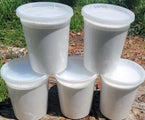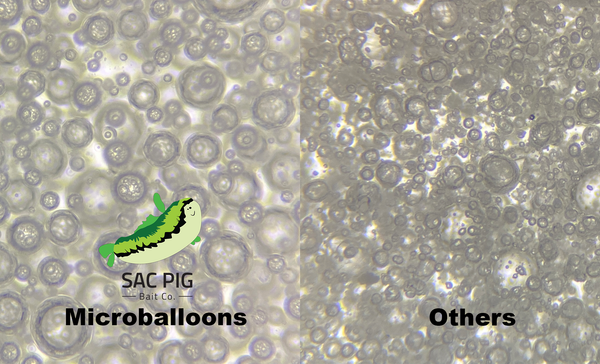
-
Description
Premium Glass Microballoons - Silane-Coated
Introducing our premium Microballoons coated with silane, specifically designed for a wide range of applications from crafting resin baits to building hobby models. These glass microspheres guarantee exceptional bonding strength and simplify the sanding process. The silane coating functions as an intermediary, fostering stronger adhesion between the resin and the microspheres, resulting in a structurally superior end product.
Are you transferring from another Microballon system?
Just use the same volume as your existing Alumilite, System 3, or similar product. If you prefer to measure by weight, simply use twice the weight.
Why SacPig Microballoons?
1. Achieve an optimal balance of structural integrity, hardness, and strength in your creations, while enjoying an easier sanding process with improved screw bite.
2. Benefit from our product's ease of mixing, ensuring a smooth integration into your projects.
3. Our microballoons pour thinner, bringing out the finest details in your work.
4. Minimize surface imperfections and decrease the need for filling and sanding due to a reduction in surface craters.
5. The silane coating provides a protective shield against moisture contamination, enabling longer exposure times.
6. With a less fluffy composition, our water-resistant microballoons are perfect for bait making, reducing desiccation effects.
Deep Dive into Silane Coating
Traditional resin struggles to form a robust chemical bond with glass microspheres due to their differing structures and properties. Furthermore, they can't readily penetrate or dissolve each other due to intermolecular attraction at the interface. This is where silane coupling agents excel, enhancing the bond between the resin and glass microspheres and leading to improved adhesion.
Silane coupling agents work at the interface between the glass microspheres and the resin, binding these disparate materials together. Our silane coupling agents contain three inorganic reactive groups on silicon (such as methoxy, ethoxy, or acetoxy), ensuring a firm bond with the glass surface. The silicon's alkoxy groups hydrolyze to silanols, either due to the addition of water or residual moisture on the glass surface. These silanols then interact with metal hydroxyl groups on the glass surface, forming a secure and enduring chemical bond.
Microballoons Under a Microscope
SacPig Microballoons pictured on the left are rounder, more consistent and less air-bubble prone. This leads to a smoother and stronger finished product. "Others", Fasco Microballoons, pictured on the right for comparison.

SacPig Microballoons Stress Test Video
Finished products made with SacPig Microballoons are substantially stronger. Thank you Perko for the resin lure samples used for testing.








